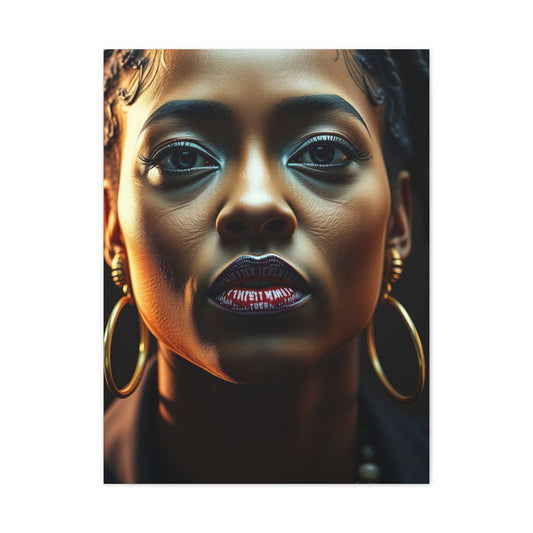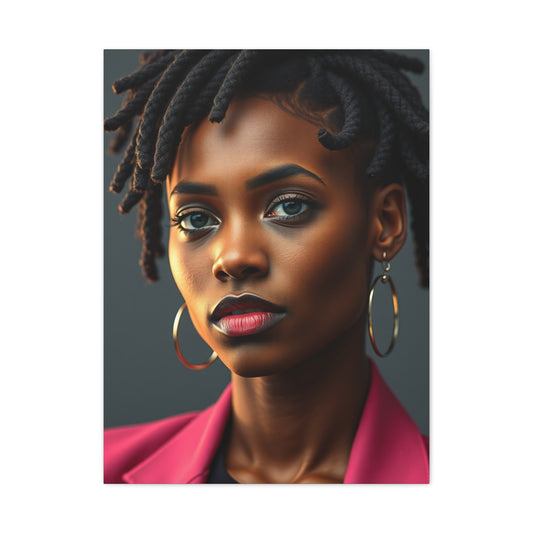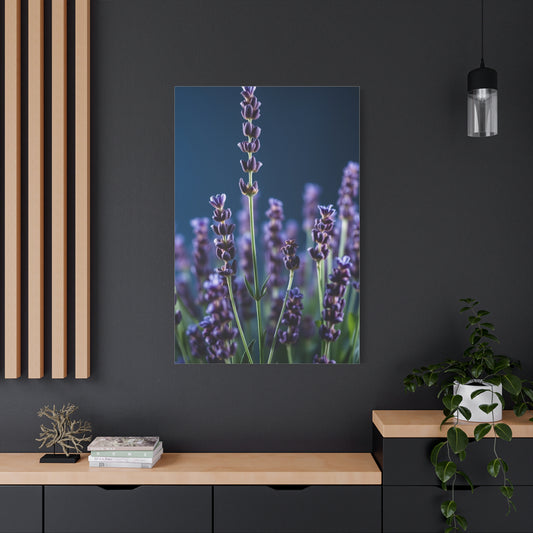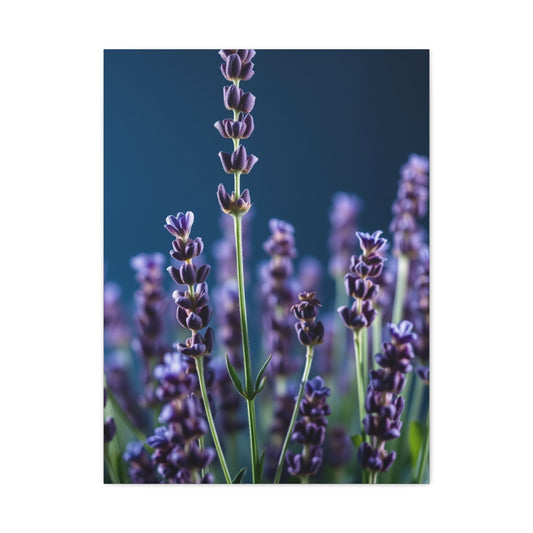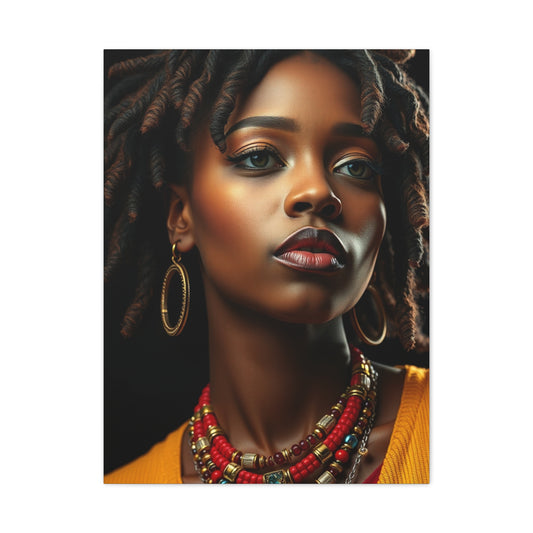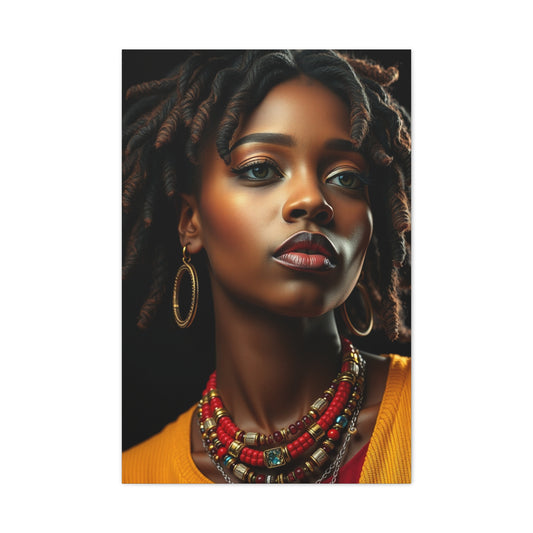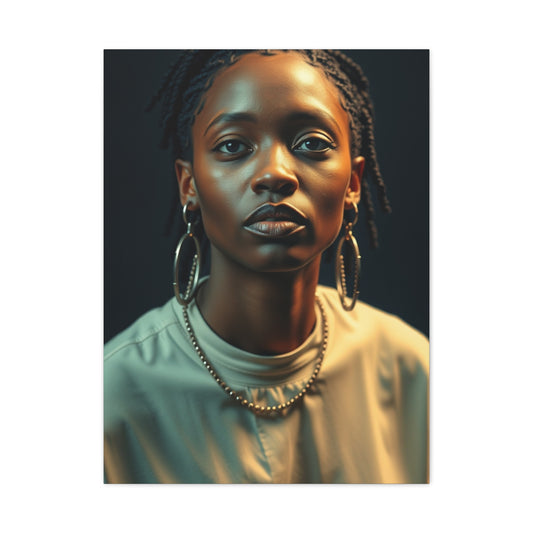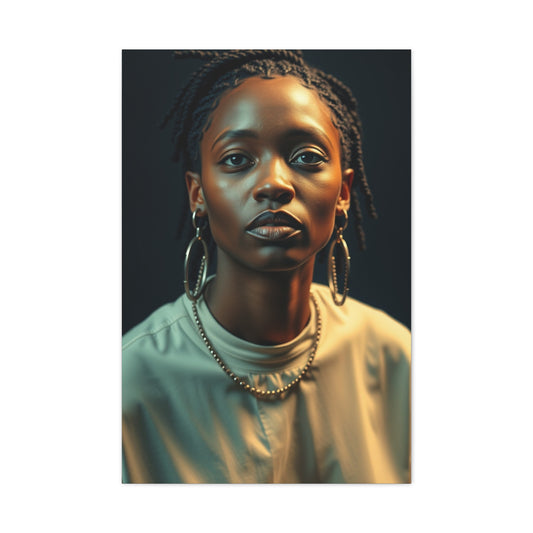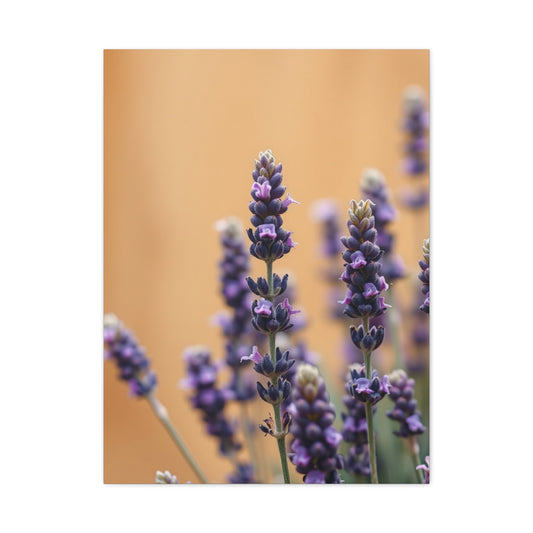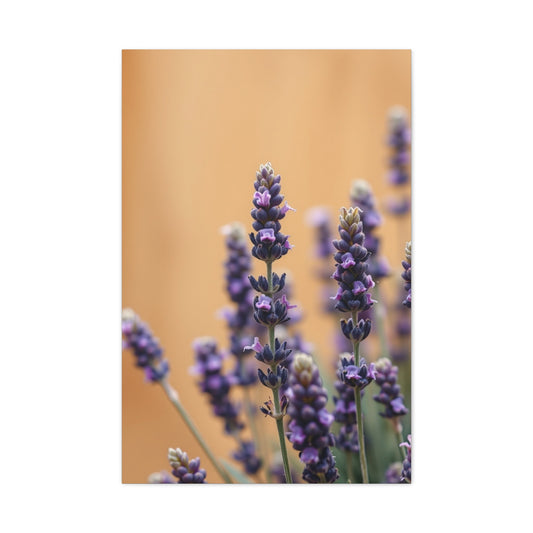Green is a versatile and captivating color for interiors. It can be bold or subtle, muted or bright, and works beautifully in almost every room. However, pairing curtains with green walls can sometimes feel tricky because the wrong shade or pattern can disrupt the harmony of a space. The key lies in understanding the undertones of green, the lighting in the room, and the mood you want to create.
For lighter shades of green, such as pistachio or mint, warmer, earthy tones can create an inviting contrast. Colors like soft browns, beige, and tan work exceptionally well in rooms with pastel green walls. The gentle warmth of these shades balances the coolness of light green, making the room feel cozy yet fresh. Solid-colored, opaque curtains in these tones are particularly effective because they offer a sense of depth without overpowering the delicate hue of the walls. Light streaming through these curtains casts a soft glow, enhancing the pastel shades without dimming the overall brightness of the room.
For spaces with brighter or more vivid green shades, such as lime or apple green, it’s important to avoid colors that clash or overwhelm the walls. Neutral tones, especially white, ivory, or soft cream, allow the green walls to remain the focal point. White curtains in particular offer a crisp, clean backdrop that tempers the vibrancy of bold green. This combination is ideal for rooms that receive a lot of natural light, as it creates a balanced, airy environment. Sheer or semi-sheer fabrics work beautifully, letting in light while providing just enough privacy, keeping the room bright and cheerful.
Dark green walls, like forest or emerald green, require a different approach. These shades are rich and dramatic, and the right curtain color can either complement or contrast for a striking effect. Neutral tones like grey, taupe, or soft beige are ideal for maintaining a harmonious look. These colors subtly reflect light and prevent the room from feeling too heavy. For those looking to make a bolder design statement, deep jewel tones such as navy blue, plum, or even burnt orange can create an eye-catching contrast. These combinations work particularly well in formal living areas or bedrooms where a sense of sophistication is desired.
The material and texture of the curtains also play a crucial role in complementing green walls. Heavy fabrics like velvet or brocade lend a luxurious feel, especially with darker greens, while lightweight cotton or linen works well with softer shades. Textured curtains—such as those with a subtle weave or pattern—can add visual interest without overwhelming the room. For rooms where light is a key factor, layering sheer curtains behind heavier drapes provides versatility, allowing control over both brightness and privacy.
Patterned curtains offer another layer of design flexibility. For example, striped curtains in alternating neutral and dark shades can enhance the visual height of a room, while geometric or botanical prints can add playfulness to spaces with lighter green walls. It’s important to ensure that patterns do not clash with the undertones of the walls. A muted pattern in complementary colors works best, maintaining cohesion while adding style.
Wooden blinds or natural shades are also excellent options, especially in rooms with vibrant green walls. The warmth of wood tones balances out bright or lime greens, softening the overall look of the space. Pull-down blinds or Roman shades in light wooden finishes allow the green walls to take center stage, while still providing texture and function. The natural material introduces an organic element, which pairs beautifully with green’s association with nature and growth.
Finally, it’s essential to consider the mood of the room. Light and pastel greens evoke calmness and freshness, making them suitable for bedrooms, nurseries, or reading corners. Brighter greens bring energy and vibrancy, perfect for kitchens, playrooms, or lively living spaces. Dark greens create a sense of luxury and depth, making them ideal for formal living areas or sophisticated home offices. The curtains you choose should align with the mood you want to create: light neutrals and pastels for softness, rich tones for drama, and textured or patterned fabrics for added interest.
When decorating a room with green walls, the shade of green plays a significant role in determining the ideal curtain colors. Green is a color that comes in an array of tones, from soft pastels to deep, dramatic hues, and each one requires careful consideration to create a balanced and aesthetically pleasing look. Understanding how different shades of green interact with curtain colors is the key to designing a harmonious space.
Curtains for Pastel Green Walls
Pastel green, including shades like mint, pistachio, and sage, is soft, calming, and versatile. These lighter greens evoke a sense of freshness and tranquility, making them perfect for bedrooms, living areas, and reading corners. Because pastel greens are light, curtains in deeper or warmer shades create a striking contrast that enhances the room’s overall appearance.
Colors like warm beige, light brown, matte tan, and even subtle gold can complement pastel green walls beautifully. These shades add depth and warmth to the room, preventing it from feeling overly airy or cold. Solid-colored curtains work particularly well in these spaces, as they provide a clean backdrop that doesn’t compete with the delicate green on the walls. Opaque materials in these tones also help filter sunlight, adding a soft glow to the room while maintaining privacy.
Another effective approach is using patterned curtains with subtle hints of pastel shades or neutral tones. Patterns such as gentle stripes, soft florals, or muted geometrics add texture and visual interest without overpowering the calming pastel walls. Sheer curtains layered underneath heavier drapes can further enhance the room by letting in light while maintaining privacy and style.
Curtains for Bright Green Walls
Bright green walls, like lime, apple, or chartreuse, are energetic and lively. These shades instantly draw attention, creating rooms that feel cheerful and invigorating. Because bright green is already a statement color, it’s important to choose curtain shades that either balance the intensity or complement it harmoniously.
Neutral shades such as crisp white, soft cream, or ivory are excellent choices for bright green walls. These colors help tone down the vividness of the walls, providing a refreshing contrast without dulling the vibrancy of the green. Sheer or semi-sheer fabrics work especially well, as they allow natural light to filter through, keeping the space bright and inviting. White curtains also maintain the playful, energetic feel of the room while offering versatility in terms of décor.
For those seeking a bolder and more dynamic look, contrasting curtain colors can create a dramatic visual impact. Shades like electric blue, sunny yellow, or even bright coral can add a lively flair to rooms with bright green walls. When using these vibrant contrasts, it’s important to keep other elements in the room neutral to avoid overwhelming the senses. For instance, a lime green wall paired with electric blue curtains can look striking in a modern living room or a child’s playroom, creating a cheerful, energetic environment.
Curtains for Dark Green Walls
Dark green walls, such as forest green, emerald, or olive, exude sophistication and elegance. These shades often serve as a bold design statement and require curtain colors that complement their richness without overpowering the space. Neutral tones like soft grey, taupe, beige, or cream are ideal for achieving a balanced, refined look. These shades allow the dark green walls to remain the focal point while reflecting light to prevent the room from feeling too heavy.
For a more dramatic approach, deep jewel tones like navy blue, burgundy, or plum can create a luxurious and eye-catching contrast. These colors pair beautifully with dark green, adding depth and dimension to the room. Using rich fabrics such as velvet or heavy linen in these shades enhances the elegance and makes the space feel cozy and sophisticated. Such combinations are particularly suitable for formal living areas, home offices, or master bedrooms where a sense of luxury and style is desired.
Another way to complement dark green walls is through layering. Using sheer curtains behind solid drapes in neutral tones can create a versatile design that allows control over light and privacy. Sheer curtains soften the darkness of the walls, while heavier drapes provide structure and sophistication when drawn. This approach also adds visual interest through texture and depth, enhancing the overall aesthetic of the room.
Curtains for Olive and Sage Green Walls
Olive and sage greens are earthy and calming, evoking a natural, grounded feel. These shades are particularly suited to spaces intended for relaxation, such as bedrooms, living rooms, or reading nooks. Curtain colors that complement olive and sage walls typically include soft neutrals and muted shades that maintain the room’s serene atmosphere.
Soft beige, tan, ivory, or light grey curtains work beautifully with these shades, providing balance without overwhelming the calming effect of the green. Sheer fabrics in these tones can diffuse sunlight, creating a gentle, relaxing ambiance. For a touch of warmth, curtains in muted mustard, warm brown, or rust can complement the earthy undertones of olive or sage walls, adding subtle depth and richness.
Patterns can also be incorporated thoughtfully. Botanical prints, gentle stripes, or textured weaves in complementary neutral tones enhance the natural feel of the room. Layering sheer and solid curtains in these colors allows flexibility in controlling light, privacy, and mood, while keeping the design cohesive.
Curtains for Two-Tone or Accent Green Walls
In some spaces, green may not cover the entire room but serve as an accent wall or be paired with another shade. In these cases, the choice of curtains can tie the two tones together seamlessly. Neutral-colored curtains such as white, cream, or soft grey often work best, as they harmonize with multiple shades without creating visual tension.
If the green wall is paired with lighter colors like beige, off-white, or pastel tones, patterned curtains in soft complementary shades can bridge the two colors effectively. Stripes, geometric patterns, or subtle textures in neutral hues can create cohesion while keeping the green accent wall as the star of the space. In more adventurous designs, introducing a third color through the curtains—such as a muted blue or gentle blush—can enhance the room’s overall palette, provided it does not clash with either the green wall or adjacent tones.
Textures and Materials Matter
Curtain materials and textures are just as important as color when pairing with green walls. Heavy fabrics like velvet, jacquard, or brocade are ideal for dark green walls, lending a luxurious and sophisticated feel. Lighter fabrics such as linen, cotton, or voile are better suited for pastel or bright green walls, keeping the space airy and fresh.
Textured curtains, such as woven patterns, embroidered details, or subtle prints, can add depth and visual interest without overwhelming the wall color. Sheer layers behind solid drapes are particularly effective in green-walled rooms, as they allow flexible control over light while adding dimension. The right material and texture can completely transform the perception of a room, making green walls appear brighter, softer, or more elegant depending on the combination chosen.
Balancing Light and Space
Green walls interact beautifully with natural and artificial light, and the curtains play a critical role in managing this interplay. Light-filtering or sheer curtains allow sunlight to enhance the green’s vibrancy, while opaque or darker shades can tone it down, creating a cozy, intimate atmosphere. In rooms with ample natural light, darker or more saturated curtain colors can be used without making the space feel heavy. Conversely, in rooms with limited light, lighter curtain shades help maintain a bright, open feeling.
In conclusion, pairing curtains with green walls requires a balance between color, texture, and lighting. Pastel greens pair well with warm neutrals, bright greens with crisp whites or bold contrasts, and dark greens with sophisticated neutrals or jewel tones. Olive and sage greens benefit from muted, earthy shades, while two-tone or accent walls can be complemented with patterns or bridging neutral colors. Choosing the right curtain material and texture enhances the overall aesthetic and functionality, creating rooms that feel harmonious, inviting, and stylish.
Green walls offer a unique opportunity to create spaces that feel fresh, calming, or invigorating, depending on the shade and design approach. While understanding color combinations is important, applying them effectively in different rooms requires considering function, mood, and light. Each room in a home has a unique purpose, and the right curtain choices can elevate the look of green walls while complementing the space’s design.
Living Rooms with Green Walls
The living room is often the centerpiece of a home, a space for gathering, relaxation, and entertainment. Green walls in living rooms can bring energy and serenity simultaneously, making them highly versatile. The choice of curtains can significantly influence the ambiance.
For lighter green living room walls, such as mint or pistachio, warmer curtain tones like beige, taupe, or light brown add depth and balance. Solid-colored curtains work well to maintain a clean, cohesive look, while subtle patterns, such as geometric shapes or soft stripes, can add visual interest without overwhelming the calm color of the walls. Layering sheer curtains underneath heavier drapes ensures flexibility, allowing light to filter through while maintaining privacy.
Bright green living rooms, including shades like lime or apple green, benefit from neutral curtains that tone down the vibrancy. Crisp whites, off-white, or cream-colored curtains maintain a bright and airy feel, highlighting the walls’ energy without competing for attention. For a more daring design, contrasting colors such as vibrant orange, electric blue, or mustard yellow can create a lively, dynamic aesthetic. When using bold contrasts, it is advisable to keep furniture and décor minimal or neutral to avoid visual clutter.
Dark green living rooms, such as those featuring emerald or forest green walls, lend themselves to rich, sophisticated styles. Curtains in soft neutrals like grey, taupe, or cream create a balanced, refined look. For a more luxurious approach, deep jewel tones such as navy blue or burgundy paired with rich fabrics like velvet or jacquard make a bold statement. Textured curtains, including subtle patterns or embroidery, add depth and elegance, enhancing the luxurious feel of dark green walls.
Bedrooms with Green Walls
Bedrooms are personal sanctuaries that require a careful balance of color, light, and comfort. Green walls in bedrooms can create a peaceful retreat or a vibrant, energetic atmosphere, depending on the hue.
Pastel green bedrooms benefit from curtains in light, warm shades such as cream, beige, or soft tan. These colors complement the soft green walls and create a relaxing, soothing environment ideal for rest. Sheer curtains layered beneath heavier drapes can allow sunlight in the morning while ensuring privacy at night. Subtle patterns, like botanical prints or soft stripes, can add interest without disrupting the calm aesthetic.
For bedrooms with brighter green walls, such as lime or chartreuse, neutral or soft-colored curtains work best to maintain a fresh, balanced atmosphere. White, ivory, or light grey curtains create contrast and prevent the room from feeling overly intense. For a more playful look, soft pastel-colored curtains in shades like blush, lavender, or sky blue can create a cheerful, energizing environment, ideal for children’s bedrooms or creative spaces.
Dark green walls in bedrooms evoke sophistication and intimacy. Curtains in soft neutrals like light grey, beige, or ivory balance the richness of the walls, while deep jewel-toned curtains in velvet or heavy linen add drama and luxury. In master bedrooms, layered curtains with sheer inner panels and heavier outer drapes can control light and privacy, making the space feel cozy yet elegant. Patterns can also be incorporated subtly—think small-scale florals or muted geometric prints—to add visual interest without overpowering the dark green walls.
Kitchens with Green Walls
Green walls in kitchens bring freshness and energy to one of the most frequently used spaces in the home. Because kitchens require functionality as much as aesthetic appeal, certain choices must balance style and practicality.
For lighter green walls in kitchens, such as mint or pistachio, simple neutral curtains in white, cream, or beige keep the space bright and airy. Lightweight fabrics such as cotton, linen, or voile work best for kitchen windows, as they are easy to maintain and allow natural light to illuminate the room. Patterns like thin stripes, checkered designs, or small botanical prints can enhance the freshness of the walls without competing with the kitchen’s functional elements.
Bright green kitchens, including lime or apple shades, are lively and bold. White or off-white curtains balance the intensity, keeping the space visually calm while complementing the green walls. For more adventurous designs, vibrant contrasting colors such as bright yellow or aqua can energize the kitchen and create a cheerful, modern atmosphere. Curtain styles like Roman shades or roll-up blinds in practical, washable fabrics work well for these dynamic spaces.
Dark green kitchens, including olive or forest green walls, evoke warmth and elegance. Neutral-colored curtains in soft greys, beige, or taupe create balance, while wooden blinds or bamboo shades add a natural, organic touch. These materials harmonize with the earthy tones of dark green and enhance the warmth of the space. Heavier fabrics are typically avoided in kitchens due to maintenance concerns, so lightweight materials or blends are preferred for practicality.
Children’s Rooms with Green Walls
Green walls in children’s rooms are excellent for creating fun, playful, and stimulating environments. The shade of green often dictates the mood and energy of the room.
Pastel greens, such as mint or soft lime, are calming and ideal for toddlers’ or young children’s rooms. Curtains in soft pastel shades like peach, lavender, or pale yellow can complement the walls and introduce additional color harmony. Patterns like stars, subtle florals, or light geometric prints enhance the playful atmosphere without being overwhelming. Sheer layers allow sunlight to brighten the space, making it cheerful and inviting.
Bright green children’s rooms, such as lime or chartreuse, benefit from neutral-colored curtains that balance the vividness of the walls. White or cream curtains provide a refreshing backdrop while allowing the green walls to remain the focal point. For more dynamic designs, curtains with fun patterns or bold contrasting colors such as bright orange, turquoise, or red can energize the room and reflect the child’s personality. Materials like cotton or blends that are easy to clean are recommended for practicality.
For rooms with darker green walls, such as forest green or emerald, neutral or muted curtains help maintain a cozy, grounded atmosphere. Soft grey, beige, or cream curtains balance the intensity of the dark green walls, while fun patterned accents such as polka dots, stripes, or playful motifs can add a youthful touch. Layering sheer curtains with heavier drapes provides control over light and privacy, creating a flexible and comfortable environment for children of different ages.
Hallways and Transitional Spaces
Green walls are not limited to primary rooms; they can also transform hallways, corridors, or transitional spaces. In these areas, certain choices often depend on window size, light exposure, and the desired impact.
For pastel green walls in hallways, light neutral curtains in white, cream, or beige create an airy, open feel. Sheer or lightweight fabrics allow natural light to travel through the space, making narrow corridors feel wider. Subtle patterns or textures can add interest without overwhelming the limited space.
Bright green walls in transitional areas benefit from neutral curtains to maintain balance and prevent the hallway from feeling chaotic. White, light grey, or soft taupe curtains offer a simple yet elegant solution. For a bold touch, small accent curtains in complementary colors like yellow or blue can introduce personality without disrupting the overall design.
Dark green walls in hallways or transitional spaces are dramatic and luxurious. Curtains in soft neutrals like grey or beige maintain balance, while materials such as velvet or textured linen add sophistication. Mirrors and metallic curtain rods can further enhance the richness of the space, reflecting light and preventing the hall from feeling too enclosed.
The right curtains can transform rooms with green walls, enhancing their mood, lighting, and aesthetic appeal. Pastel greens pair beautifully with warm, soft neutrals, creating calming spaces. Bright greens benefit from neutral or playful contrasting colors, energizing living rooms, kitchens, and children’s rooms. Dark green walls offer opportunities for sophisticated combinations using neutrals, jewel tones, and textured fabrics.
Understanding the room’s function, natural lighting, and desired ambiance is essential when selecting curtain colors and fabrics. By tailoring curtain choices to each room, homeowners can create harmonious, inviting spaces that maximize the beauty of green walls. Whether the goal is calm and restful, vibrant and playful, or elegant and sophisticated, careful consideration of curtain color, material, and style ensures the green walls are showcased to their fullest potential.
Green walls are a bold and versatile design choice that can transform any space. From soft pastels to deep forest greens, each shade offers unique opportunities to express personality, mood, and style. While selecting curtain colors is important, combining them with textures, layers, and patterns can elevate the design, adding sophistication, warmth, and visual interest. In this section, we explore creative styling techniques for curtains that work harmoniously with green walls, helping homeowners craft rooms that are both functional and visually striking.
Layering Curtains for Depth and Functionality
One of the most effective ways to style curtains with green walls is through layering. Layering involves combining two or more types of curtains to create dimension, control lighting, and enhance aesthetics. This technique works for any room, from bedrooms to living areas, and is particularly useful for managing green’s visual intensity.
A common approach is pairing sheer curtains with heavier drapes. Sheer curtains, often in white, cream, or light grey, allow natural light to filter into the room while softening the appearance of green walls. They create a gentle glow that highlights the color without overpowering the space. Heavier drapes, in contrast, can provide privacy, block sunlight, and add texture. For instance, pastel green walls with beige or soft brown drapes layered over sheer white curtains create a balanced, cozy look. Similarly, bright green walls with layered white and light grey curtains maintain vibrancy while controlling light and adding elegance.
In living rooms with dark green walls, layering can elevate sophistication. Sheer panels in ivory or light grey combined with velvet drapes in deep jewel tones like emerald, navy, or burgundy create a luxurious, multidimensional appearance. The layers also allow flexibility: curtains can be drawn for privacy or opened to showcase the striking green walls, offering both practicality and style.
Using Textures to Complement Green Walls
Texture plays a critical role in enhancing green-walled spaces. Curtains are not just about color; the material, weave, and surface finish can dramatically influence a room’s overall aesthetic. Different fabrics can convey softness, warmth, sophistication, or casual comfort.
For pastel greens, lightweight fabrics like linen, cotton, or voile are ideal. Their natural texture keeps the space airy and relaxed, perfect for bedrooms, kitchens, and sunlit living areas. Linen curtains with a subtle weave can introduce gentle pattern and tactile interest without overpowering soft green walls. For a more sophisticated approach, adding embroidered or slightly textured patterns enhances depth while maintaining the calming effect of light green.
Bright green walls pair well with smooth, crisp fabrics such as cotton or polyester blends. These materials allow vibrant wall colors to shine while providing structure. A subtle texture, like a thin stripe or embossed pattern, adds a touch of personality without competing with the boldness of the green. In playrooms or creative spaces, fun textures such as lightweight pleats or decorative trims can create a lively, engaging environment.
Dark green walls are complemented by rich, tactile fabrics such as velvet, brocade, or jacquard. These materials bring a sense of luxury and depth, amplifying the elegance of deep green shades. The reflective quality of certain fabrics, like silk blends or velvet with a slight sheen, interacts beautifully with natural and artificial light, highlighting the richness of the walls. Adding patterned textures, such as subtle geometric motifs or tone-on-tone embroidery, introduces visual interest without overpowering the color palette.
Patterns and Prints for Green Walls
Patterned curtains offer another dimension to styling green walls. They can add character, break monotony, and enhance the room’s personality. However, the choice of pattern should be informed by the shade of green and the intended mood of the space.
Pastel green walls allow for gentle, understated patterns. Soft florals, delicate stripes, or small-scale geometric designs work well. These patterns add a hint of movement and texture, making the room feel inviting without detracting from the walls’ calmness. For example, a bedroom with pistachio walls and beige curtains featuring a subtle leaf pattern evokes a natural, harmonious atmosphere.
Bright green walls provide a canvas for more adventurous patterns. Bold stripes, abstract designs, or modern geometric prints can energize the space. Pairing these curtains with simple, neutral furniture ensures that the room remains balanced. For instance, a lime green wall paired with white curtains featuring bright yellow or turquoise stripes can create a cheerful, dynamic living area without feeling chaotic.
Dark green walls offer opportunities for sophisticated patterns. Tone-on-tone designs, damask prints, or elegant brocade motifs in neutral or jewel-toned curtains can elevate the room’s style. Patterns in subtle metallic threads, such as silver or gold, can introduce a hint of glamour and sophistication. In formal living rooms or dining areas, these patterned curtains complement dark green walls beautifully, adding texture and refinement.
Combining Green Walls with Contrasting Curtain Colors
While neutral tones are often the safest choice for green walls, contrasting colors can create bold, eye-catching spaces. Contrasts should be chosen carefully to maintain balance and ensure the overall design feels intentional rather than jarring.
For pastel green walls, complementary contrasts in soft shades such as blush, lavender, or muted yellow work well. These colors create a harmonious, playful look suitable for bedrooms, nurseries, or casual living spaces. Bright green walls allow for more dramatic contrasts. Vibrant shades like electric blue, sunny yellow, or coral can make a statement, especially in rooms designed for energy and activity. Maintaining neutral furniture and décor ensures the contrasts do not overwhelm the space.
Dark green walls paired with contrasting colors such as burnt orange, mustard, or deep purple can make a room feel lively and luxurious. This approach works particularly well in spaces meant to impress, such as formal dining rooms, offices, or living areas. When using high-contrast curtains, careful attention to lighting and accessories ensures that the space remains cohesive and visually balanced.
Creative Curtain Designs for Unique Spaces
Green walls offer opportunities to experiment with unconventional curtain designs. Layered Roman shades, patterned roller blinds, or pleated drapes can introduce modern flair while maintaining harmony with the green walls. Wooden or bamboo blinds are particularly effective for bright or lime green walls, adding an organic, earthy element that softens the boldness of the paint.
In rooms with high ceilings, floor-to-ceiling curtains create a dramatic effect, emphasizing the verticality of the space while complementing green walls. Light, airy fabrics in neutral tones help balance bold green, while heavier fabrics can enhance a sophisticated, formal atmosphere. Curtains with decorative trims, tassels, or fringes can add subtle personality, especially in living areas or bedrooms.
In playful or creative spaces, such as children’s rooms, layered curtains with varying colors, textures, or patterns can make the room feel lively and fun. Pairing soft pastel walls with multi-colored curtains, or contrasting bright green walls with bold patterned drapes introduces a dynamic visual energy. Using washable or easy-to-maintain fabrics ensures practicality without compromising style.
Balancing Function and Aesthetics
While style is important, functionality should not be overlooked when choosing curtains for green walls. Sheer curtains allow natural light to enhance the color of the walls, while heavier drapes provide privacy and control over sunlight. In kitchens, lightweight, washable fabrics are ideal for practicality. In bedrooms and living rooms, layered curtains provide versatility, allowing adjustments based on light, mood, and privacy needs.
In addition to color and texture, curtain hardware can enhance the overall aesthetic. Curtain rods in metallic finishes like gold, bronze, or brushed nickel complement the richness of dark green walls, while wooden or neutral-toned rods harmonize with pastel and bright greens. The choice of hardware ensures that curtains integrate seamlessly into the room’s design, completing the visual story without distraction.
Green walls are bold and versatile, providing endless opportunities for creativity in interior design. The key to successful styling lies in balancing color, texture, and functionality. Pastel greens benefit from soft neutrals, light fabrics, and subtle patterns that enhance calmness. Bright green walls thrive with neutral tones or bold contrasts that energize the space, while dark greens demand rich fabrics, elegant textures, and sophisticated patterns.
Layering curtains, experimenting with textures, and incorporating patterns can elevate the design, creating depth and visual interest. Thoughtful contrasts and unconventional curtain choices allow homeowners to express personality while maintaining harmony with green walls. Considering room function, natural lighting, and desired ambiance ensures that curtains not only enhance the aesthetic but also provide practicality and comfort.
By combining these techniques, any room with green walls can become a balanced, inviting, and stylish space. From cozy bedrooms to lively children’s rooms, formal living areas to sunlit kitchens, the right curtains can transform green walls from a bold design choice into a harmonious centerpiece, enriching the overall interior and elevating the home’s atmosphere.
Green walls are a unique and versatile feature in home design. Their presence alone can influence the mood of a room, dictate lighting choices, and determine how furniture and décor should be arranged. While choosing curtain colors is important, advanced styling techniques can elevate the space even further. From layering, textures, and patterns to coordinating with furniture, lighting, and ambiance, these strategies help create rooms that are harmonious, functional, and visually appealing.
Creating Ambiance Through Curtain Color and Fabric
The ambiance of a room depends heavily on how green walls interact with certain choices. Soft, muted greens like mint or sage evoke calmness and serenity. Pairing these walls with curtains in neutral tones such as beige, light grey, or soft ivory enhances tranquility. Lightweight fabrics such as linen or cotton maintain a breezy, relaxed feel, perfect for bedrooms or reading nooks. Sheer curtains allow natural light to filter in gently, creating a sense of openness and airiness that accentuates the soft green walls.
Brighter greens, such as lime or chartreuse, bring vibrancy and energy. In these spaces, neutral curtains like white, cream, or soft taupe help balance the room’s intensity. Contrasting or complementary colors, such as soft pastels or muted yellows, can also be introduced to create a cheerful, playful ambiance. Sheer panels layered with opaque curtains allow control over light and privacy while adding depth to the room. In playrooms, kitchens, or creative studios, this layered approach creates both functionality and visual interest.
Darker greens, such as forest or emerald, exude sophistication and elegance. In these rooms, curtains in jewel tones, soft neutrals, or metallic accents elevate the ambiance. Fabrics like velvet, brocade, or textured linen add depth, making the space feel luxurious and cozy. Layered drapes with sheer inner panels allow flexibility—curtains can be opened to showcase rich green walls or closed for a dramatic, intimate atmosphere. Properly coordinated lighting enhances the textures and colors, creating a sense of elegance and comfort.
Layering Techniques for Depth and Functionality
Layering curtains is one of the most versatile techniques for green walls. Combining multiple types of curtains not only adds visual interest but also provides functionality in light control, privacy, and insulation. A common approach is pairing sheer curtains with heavier drapes. Sheers in light tones like white, cream, or soft grey diffuse sunlight, enhancing the wall’s color while softening its intensity. Heavier drapes in complementary or contrasting tones provide privacy, block excessive light, and add texture.
For pastel green walls, layering soft beige or light brown drapes over sheer white curtains creates a calm, inviting environment. In bright green spaces, neutral or lightly patterned drapes over sheer white panels balance the vibrancy while maintaining a fresh, energetic feel. Dark green walls benefit from rich, textured fabrics layered over sheer neutrals, adding a sense of luxury and sophistication. Layering also enables flexibility: sheers can remain closed during the day to allow light in, while heavier drapes can be drawn at night for a cozy, private ambiance.
Incorporating Patterns and Prints
Patterns and prints are powerful tools for enhancing green-walled rooms. They add character, depth, and style while breaking visual monotony. However, patterns must be chosen carefully to complement the wall color rather than compete with it.
Pastel green walls are ideal for subtle patterns. Soft florals, delicate stripes, or gentle geometrics enhance the calming effect of the walls while introducing texture and interest. For example, a mint-green bedroom paired with beige curtains featuring a faint leaf motif creates a harmonious, natural atmosphere.
Bright green walls allow for bolder patterns, such as stripes, large geometrics, or abstract prints. These patterns energize the space and complement the vibrant green backdrop. A lime-green living room paired with white curtains featuring bold yellow or turquoise stripes can create a playful yet sophisticated look when furniture and décor are kept neutral.
Dark green walls are suited to more elegant patterns. Tone-on-tone motifs, damask prints, or subtle brocades add refinement without overpowering the space. Metallic threads in gold, silver, or bronze can be incorporated for a touch of glamour, reflecting light and emphasizing the richness of the green walls. Patterns can also introduce visual rhythm, leading the eye across the space and adding balance.
Coordinating with Furniture and Accessories
Curtains should not be considered in isolation; their color, fabric, and pattern must coordinate with the room’s furniture and accessories. For pastel green walls, soft neutrals, and earthy curtain tones complement wooden furniture, rattan pieces, and light-colored upholstery. This combination creates a cohesive, relaxed look that feels organic and inviting. Adding textured cushions or throws in complementary colors can enhance harmony and depth.
Bright green walls require careful consideration of furniture. Neutral-colored curtains allow furniture pieces to stand out while maintaining balance. For example, a bright green wall with white curtains and light grey or beige sofas creates a modern, visually appealing palette. Introducing accent cushions or rugs in complementary colors, like pastel yellow or soft turquoise, ties the room together without overpowering the green walls.
Dark green walls provide a dramatic backdrop that pairs beautifully with darker or more luxurious furniture finishes. Velvet sofas, wooden furniture in walnut or mahogany, and metallic accents can harmonize with rich curtains in deep jewel tones or textured neutrals. Coordinating accessories, such as cushions, vases, or wall art, in complementary colors enhances the room’s elegance while maintaining cohesion.
Lighting Considerations
Lighting dramatically affects how green walls and curtains appear. Natural light interacts with wall colors and fabrics to create varying moods throughout the day. Sheer curtains allow sunlight to filter softly, highlighting textures and adding a gentle glow to pastel or bright green walls. Layering heavier drapes over sheers provides flexibility, allowing control over light intensity and ambiance.
Artificial lighting also plays a crucial role. Warm-toned bulbs complement darker green walls and rich curtain fabrics, creating a cozy and inviting atmosphere. Cool-toned lighting works well with lighter green shades, enhancing their freshness and vibrancy. Positioning lamps near windows or using wall sconces can further highlight curtain textures and patterns, making them an integral part of the room’s design rather than merely functional elements.
Creative Curtain Styles
Green walls can accommodate a variety of curtain styles beyond traditional drapes. Roman shades, roller blinds, and pleated curtains offer modern alternatives that work well with different green tones. For pastel greens, soft, flowing fabrics in these styles maintain a gentle, airy look. Bright greens pair well with structured Roman or roller shades in neutral tones, balancing vibrancy with clean lines. Dark green walls benefit from pleated or layered curtains with textured fabrics, enhancing sophistication and depth.
Unique elements such as wooden blinds, bamboo shades, or patterned tiebacks can add character to green-walled rooms. Natural materials like bamboo or rattan complement green’s association with nature, softening the intensity of bright greens or creating warmth against dark greens. Decorative hardware in metallic finishes enhances elegance, particularly with dark or jewel-toned curtains, while simple wooden or neutral-toned rods maintain harmony in pastel or bright spaces.
Seasonal and Mood-Based Adjustments
Curtains can also help adjust a room’s mood or adapt to seasonal changes. In warmer months, lighter fabrics and bright or pastel curtain colors can make green-walled rooms feel airy and fresh. During cooler months, heavier drapes in warm neutrals, deep jewel tones, or textured fabrics add coziness and sophistication. Layering allows flexibility: sheers provide daytime brightness, while heavier drapes offer nighttime warmth and privacy.
Experimenting with curtain length is another subtle way to influence room perception. Floor-length curtains add drama and elegance, especially in living areas with high ceilings. Mid-length curtains are practical for kitchens, bathrooms, or smaller rooms, maintaining balance while allowing natural light. For green walls, the curtain length can visually anchor the room, emphasizing height, width, or architectural features.
Green walls are bold and adaptable, offering endless opportunities for creative curtain styling. Beyond simple color choices, considering layering, textures, patterns, furniture coordination, lighting, and curtain styles can transform any space. Pastel greens benefit from soft neutrals and delicate textures, bright greens thrive with neutral or contrasting tones, and dark greens gain sophistication through luxurious fabrics and elegant patterns.
By thoughtfully integrating curtains with green walls, homeowners can create rooms that are harmonious, inviting, and visually captivating. From calming bedrooms and lively living areas to playful children’s rooms and elegant dining spaces, advanced curtain styling techniques enhance the mood, functionality, and overall aesthetic. The right combination of color, texture, pattern, and layering ensures that green walls remain a striking feature while the curtains elevate the space to its full potential.
Green walls have become a favorite choice in modern interiors because they bring life, vibrancy, and a sense of harmony to any space. From calming pastel greens to dramatic emerald tones, this color can define the atmosphere of a room. Choosing the right curtains is a crucial aspect of interior design, as they complement or contrast with the walls, influence the mood, and add texture and depth. In this final section, we explore trending curtain designs, unconventional styling ideas, and practical tips to create cohesive, visually appealing interiors with green walls.
Trending Curtain Designs for Green Walls
Interior design trends are constantly evolving, but certain curtain styles have proven to be particularly effective with green walls. One such trend is floor-to-ceiling curtains, which create a sense of height and grandeur in a room. For rooms with high ceilings or large windows, this design is especially effective. Light, flowing fabrics like linen or cotton in neutral shades work well for pastel or bright green walls, keeping the space airy while emphasizing elegance. Dark green walls can be paired with rich fabrics like velvet or silk to create a dramatic, luxurious feel. Floor-to-ceiling curtains also help frame the green walls, making them appear more deliberate and integrated into the room’s design.
Another trending design is layered curtains, which combine different fabrics, textures, and opacity levels. Layering is not only visually appealing but also functional, allowing control over light, privacy, and insulation. Sheer curtains in light shades can be paired with heavier drapes in complementary or contrasting colors. For pastel green walls, layering beige or soft brown drapes over sheer white panels creates a warm and inviting environment. Bright green walls benefit from white or cream sheers combined with lightly patterned drapes, adding dimension while maintaining a balanced look. For dark green walls, velvet drapes over neutral sheers add sophistication and depth, enhancing the luxurious ambiance.
Patterned Curtains in Modern Interiors
Patterns are another way to add personality to green-walled rooms. Stripes, geometric designs, and botanical prints are trending options that can work with various shades of green. Soft floral or leaf patterns complement pastel green walls, adding a subtle natural element that enhances the room’s calmness. Light-colored stripes or geometric patterns can add height or width to a room, creating a visually balanced effect.
For bright green walls, bolder patterns are trending. Curtains featuring abstract designs, large geometric motifs, or playful color combinations can energize the space and create focal points. Pairing patterned curtains with neutral furniture and accessories ensures that the room doesn’t feel overwhelming. In contrast, dark green walls are best paired with elegant, understated patterns. Tone-on-tone designs, metallic accents, or damask prints add sophistication without distracting from the richness of the green walls. Patterns with metallic threads or subtle embroidery enhance texture and reflect light, giving the room depth and visual interest.
Unconventional Curtain Ideas
While traditional curtains remain popular, unconventional styles are gaining attention, especially in contemporary interior design. One creative idea is using Roman shades or roller blinds instead of standard drapes. These designs provide clean lines and a minimalist look, which works well with bright or pastel green walls. Roman shades in neutral or muted colors allow the green walls to take center stage while providing light control and privacy.
Another innovative approach is using mixed fabrics. For instance, combining natural materials like linen or cotton with luxurious fabrics like velvet or silk creates an interesting contrast that adds dimension to the room. In living rooms with dark green walls, pairing velvet drapes with linen sheers softens the richness of the walls while maintaining elegance. For pastel green walls, mixing cotton panels with delicate lace or embroidered layers can introduce texture and visual appeal without overwhelming the space.
Natural and Sustainable Curtain Options
Sustainable and eco-friendly interiors are a growing trend, and curtains are no exception. Materials like organic cotton, bamboo, linen, and hemp not only add a natural aesthetic but also complement green walls beautifully. Wooden blinds or bamboo shades are particularly effective for bright green walls, adding an earthy element that softens the intensity and creates a harmonious, nature-inspired look. In rooms with dark green walls, natural fabrics with subtle textures balance the richness of the color while enhancing warmth and comfort.
Cohesive Color Schemes with Green Walls
Achieving a cohesive color scheme is essential for interiors with green walls. The goal is to select certain colors that harmonize with the walls while integrating with furniture, décor, and lighting. For pastel green walls, neutral shades such as beige, ivory, and soft greys work seamlessly. Introducing complementary colors through accessories like cushions, rugs, or lamps can enhance cohesion. For example, a mint-green bedroom with beige curtains and pastel yellow or blush accents creates a serene and visually balanced space.
Bright green walls require careful balance. Neutral curtains in white, cream, or soft grey provide stability, while small pops of complementary or contrasting colors can be added through accessories. For instance, a lime green living room with white curtains, paired with turquoise or coral accent pieces, creates an energetic yet harmonious design. When using bold curtain colors with bright green walls, it’s important to limit other vibrant elements to avoid visual clutter.
Dark green walls offer more flexibility for contrast and bold design choices. Jewel-toned curtains, such as deep navy, burgundy, or plum, can make a dramatic statement. Neutrals like grey or taupe provide a calming effect while highlighting the richness of the walls. Metallic accents, such as curtain rods, tiebacks, or patterned fabrics, can further enhance cohesion and sophistication. Ensuring that furniture, rugs, and accessories complement the curtains maintains balance and prevents the space from feeling heavy.
Lighting and Curtain Interaction
Lighting plays a crucial role in how green walls and curtains interact. Natural light enhances the vibrancy of bright green walls and softens pastel tones, while darker green walls can benefit from warm-toned artificial lighting to create a cozy atmosphere. Sheer curtains allow sunlight to filter through, creating a glow that enhances green’s natural vibrancy. Layering sheers with heavier drapes gives flexibility, allowing light control and mood adjustments.
In rooms with dark green walls, using reflective materials, metallic accents, or glossy finishes on curtains can interact with light to prevent the space from feeling too dark. Conversely, pastel or bright green walls pair beautifully with matte or lightly textured curtains, maintaining a soft, airy appearance while reflecting light naturally.
Incorporating Textures and Finishes
Texture and finish play a key role in curtain design. Combining different textures adds depth and interest to green-walled spaces. For pastel greens, lightweight fabrics like cotton, linen, or voile create a relaxed, airy feel. Adding subtle embroidered details or woven patterns enhances sophistication without overwhelming the soft wall color.
Bright green walls work well with smooth, structured fabrics, including cotton blends or light polyester, which balance the room’s vibrancy. Incorporating minimal patterns or textures in the curtain fabric can make the space feel dynamic while maintaining order. Dark green walls lend themselves to rich textures, such as velvet, brocade, or jacquard. These fabrics reflect light, add depth, and complement the luxurious aesthetic of deep green walls. Combining matte and glossy finishes in layered curtains can enhance visual interest and elevate the overall design.
Curtain Hardware and Accessories
Curtain hardware, such as rods, rings, and tiebacks, is an often-overlooked aspect of styling. Coordinating hardware with curtain color and green wall tones can enhance the overall design. For pastel or bright green walls, simple wooden rods or neutral-toned accessories maintain harmony. For dark green walls, metallic finishes in gold, silver, or bronze add elegance and sophistication. Decorative tiebacks, tassels, or finials can also complement the room’s style, whether modern, traditional, or eclectic.
Seasonal and Functional Adjustments
Curtains can also be adapted seasonally or functionally to complement green walls. During warmer months, lightweight fabrics in bright or neutral tones allow green walls to shine while keeping the room fresh and airy. In colder months, heavier fabrics in rich colors, layered with sheers, create warmth and coziness. Functional considerations, such as blackout curtains for bedrooms or insulating drapes for energy efficiency, can be seamlessly integrated without compromising style.
Bringing It All Together
Creating a cohesive, stylish room with green walls involves more than choosing a curtain color. It requires thoughtful consideration of trends, layering, textures, patterns, fabrics, lighting, furniture, and accessories. Pastel greens benefit from soft neutrals and light fabrics, bright greens thrive with neutral or complementary contrasts, and dark greens gain sophistication through rich fabrics and jewel-toned curtains. Layering and patterning add depth and interest, while curtain hardware and accessories complete the look.
By combining these strategies, homeowners can transform rooms with green walls into inviting, functional, and visually stunning spaces. From airy bedrooms and energetic living areas to luxurious formal rooms and playful children’s spaces, curtains are an essential tool for enhancing green walls. The right combination of design elements ensures that green walls remain a focal point while the overall interior feels balanced, harmonious, and cohesive.
Green walls offer endless opportunities for creativity. Trendy curtain designs, unconventional styling approaches, and thoughtful coordination with room elements allow homeowners to experiment and express personality. Whether it’s through layering, textures, bold patterns, or subtle neutrals, the curtains chosen can elevate green walls from a simple color choice to the centerpiece of a sophisticated, stylish interior.
Green walls offer a bold and refreshing palette for interior design. Whether in soft pastel, vibrant lime, or deep emerald shades, green walls instantly draw attention and set the tone for the entire room. Curtains, when carefully chosen, can enhance these walls, control lighting, balance color, and elevate the overall aesthetic. In this expanded section, we explore more trending designs, unconventional ideas, and detailed strategies for creating cohesive, stylish spaces with green walls.
Innovative Curtain Styles for Modern Interiors
Modern interiors often favor clean lines, minimalistic designs, and functional elegance. Roman shades, panel curtains, and roller blinds are trending options that complement green walls beautifully. Roman shades offer a structured yet soft look, especially in neutral tones, allowing green walls to remain the focal point. Panel curtains, which slide across wide windows, create an uncluttered, contemporary aesthetic. Roller blinds in natural fabrics, like bamboo or linen blends, are practical and stylish, balancing vibrant green walls while allowing light control.
For pastel green walls, lightweight fabrics in soft neutrals or muted pastels maintain a gentle, airy feel. In contrast, bright greens pair well with structured blinds or panels in whites or greys to reduce visual intensity while keeping the space lively. Dark green walls call for luxurious textures in roman shades or layered panels, using velvet, silk, or brocade to add richness and sophistication.
Creative Layering for Visual Interest
Layering remains one of the most versatile curtain techniques. In addition to traditional sheer and opaque layers, consider double patterns or mixed materials. For example, a sheer panel with subtle floral prints combined with a heavier velvet curtain in a neutral tone adds both depth and luxury. Layering can also be functional: sheers let in natural light during the day, while heavier drapes provide privacy and block sunlight at night.
Bright green walls benefit from multi-layered curtains with neutral and soft contrasting tones. Combining solid panels with lightly patterned sheers introduces a dynamic visual experience while maintaining balance. For dark green walls, layering textured fabrics in complementary shades creates an opulent look. Adding a thin metallic trim or embroidered edge to one layer can catch light and add subtle sparkle without overwhelming the design.
Patterns and Textures in Depth
Patterns are no longer limited to stripes or florals. Geometric designs, abstract motifs, and tone-on-tone textures are increasingly popular with green walls. Soft, delicate patterns complement pastel greens, adding subtle interest without overpowering the calm ambiance. For example, mint walls paired with ivory curtains featuring a faint chevron or leaf motif create harmony while enhancing the room’s visual appeal.
Bright green walls invite bold, energetic patterns. Large-scale geometric designs, abstract art prints, or color-blocked curtains create a lively, contemporary look. Pairing patterned curtains with minimalistic furniture ensures the space remains balanced and visually appealing. In children’s rooms, playful motifs like stars, clouds, or animal prints layered over pastel green walls can create a whimsical and cheerful environment.
Dark green walls, on the other hand, lend themselves to sophisticated textures and muted patterns. Velvet, brocade, and jacquard fabrics add luxury and tactile interest, while subtle tone-on-tone patterns introduce elegance without competing with the wall color. Incorporating metallic threads, embroidered motifs, or raised textures can enhance depth and reflect light, making the room feel dynamic and refined.
Unconventional Curtain Choices
Moving beyond traditional curtains opens creative possibilities. Bamboo or wooden blinds, mixed-material curtains, and asymmetrical designs are gaining traction in modern interiors. Natural materials harmonize beautifully with green walls, adding warmth and grounding the space. Bamboo shades paired with bright lime or pistachio walls, for example, create a nature-inspired aesthetic, blending vibrancy with organic textures.
Asymmetrical curtains, where one panel is longer or a different color than the other, add a unique focal point and artistic flair. Combining soft pastel green walls with one ivory panel and one patterned panel can create a modern, eclectic look that draws the eye without overwhelming the room. Layering fabrics in different textures, such as silk over linen, introduces depth and sophistication, allowing homeowners to experiment with visual interest.
Sustainable and Eco-Friendly Options
Sustainability is an emerging trend in home design. Eco-friendly curtains made from organic cotton, hemp, bamboo, or recycled fabrics are not only environmentally responsible but also complement green walls naturally. These materials often have textures that enhance the visual and tactile appeal of the space. Linen or hemp panels for pastel green walls create a serene, organic vibe, while bamboo blinds for bright green walls balance intensity with natural warmth.
Dark green walls can benefit from heavier, natural fabrics in rich textures, creating warmth and luxury without relying on synthetic materials. Choosing sustainable curtains allows homeowners to maintain style while making environmentally conscious design choices.
Harmonizing Curtains with Furniture and Décor
Curtains do not exist in isolation—they must coordinate with furniture, accessories, and overall color schemes. Pastel green walls pair beautifully with soft, neutral curtains and wooden furniture. Accessories in complementary shades, like muted yellows, blush, or soft blues, enhance harmony without overwhelming the subtle palette. Throw pillows, rugs, and lamps can further tie the design together, reinforcing cohesion.
Bright green walls demand careful balancing. Neutral curtains in white, grey, or cream provide stability, while accent colors in furniture or décor can create visual interest. For instance, a lime-green living room with white curtains and turquoise cushions maintains vibrancy without feeling chaotic. In dark green spaces, jewel-toned curtains in navy, burgundy, or plum complement dark wooden furniture, metallic accents, and textured rugs, creating a cohesive, luxurious feel.
Lighting Considerations for Green-Walled Spaces
Lighting interacts directly with green walls and curtains, affecting the room’s mood and perception. Sheer curtains allow natural light to filter in, softening pastel or bright green walls. Layered drapes with heavier fabrics can adjust the ambiance for nighttime or privacy.
Artificial lighting also plays a role. Warm-toned lighting complements dark green walls, creating a cozy and intimate environment, while cool-toned lighting enhances the freshness of pastel or bright green spaces. Reflective curtain materials, metallic threads, or light-colored sheers can interact with lighting to create dynamic visual effects. Positioning lamps strategically near windows or using backlighting can highlight certain textures and patterns, adding depth and sophistication.
Functional and Seasonal Curtain Choices
Curtains are not only decorative—they serve functional purposes like light control, insulation, and privacy. Sheer panels paired with heavier drapes are practical for year-round adjustments. During warmer months, lightweight fabrics in bright or neutral shades enhance airiness and highlight green walls. In cooler seasons, thick fabrics or layered curtains provide warmth and insulation, complementing darker shades of green.
Room function also affects curtain selection. In kitchens, lightweight, washable fabrics are ideal for ease of maintenance, while bedrooms may benefit from blackout or thermal-lined drapes. Living rooms and dining areas can accommodate luxurious fabrics with decorative trims or embroidered patterns, enhancing sophistication while maintaining practicality.
Bringing It All Together: Cohesive Styling Tips
Creating a cohesive space with green walls involves considering several elements together: curtain color, texture, pattern, layering, hardware, lighting, and furniture coordination. Pastel greens pair well with soft neutrals, gentle patterns, and light fabrics, maintaining calmness. Bright greens work best with neutral or subtly contrasting tones and minimalistic furniture to balance energy. Dark greens thrive with luxurious fabrics, rich textures, jewel tones, and metallic accents for elegance.
Mixing textures, experimenting with patterns, and layering curtains adds depth and visual interest, ensuring that green walls remain a focal point while enhancing the room’s overall design. Coordinating accessories, rugs, and décor items in complementary colors maintains balance and prevents the space from feeling heavy or chaotic.
Creative Tips for Unique Spaces
-
Layer contrasting patterns: Pair subtle floral sheers with geometric heavy drapes for an eclectic, stylish look.
-
Experiment with curtain hardware: Metallic rods or decorative finials can elevate sophistication, especially with dark green walls.
-
Use asymmetry: Different lengths, textures, or colors in one set of curtains can create a modern artistic effect.
-
Combine natural materials: Linen, bamboo, and cotton complement green walls and add an organic touch.
-
Play with light: Use sheers, reflective fabrics, and metallic threads to interact with natural and artificial light creatively.
-
Integrate seasonal changes: Swap lighter fabrics for heavier ones depending on the weather, maintaining comfort and style year-round.
Final Thoughts:
Green walls are bold, versatile, and full of character, capable of transforming any room into a space that feels vibrant, calming, or sophisticated, depending on the shade. While green itself makes a strong statement, curtains play an equally important role in defining the mood, enhancing aesthetics, and providing functionality. The right curtain choices can harmonize the room, create balance, and highlight the unique charm of green walls.
Pastel greens pair beautifully with soft neutrals, light fabrics, and subtle patterns, creating calming, airy spaces that feel welcoming. Bright green walls invite the use of neutral tones, playful contrasts, or bold patterns, adding energy and personality without overwhelming the room. Dark green walls, with their richness and depth, call for luxurious fabrics, jewel-toned accents, and layered textures, producing a sophisticated and elegant ambiance.
Beyond color, curtain design involves considering textures, patterns, layering, hardware, and lighting. Layered curtains add dimension and flexibility, allowing control over light and privacy while enriching the visual appeal. Textures—from soft linen to plush velvet—introduce depth and tactile interest, while patterns can break monotony or make a statement depending on the room’s vibe. Choosing curtains in harmony with furniture, accessories, and the overall color palette ensures a cohesive and polished look.
Curtains also provide functional benefits. They help regulate natural light, provide privacy, control room temperature, and enhance acoustics—all while complementing the green walls as a central design feature. Whether in bedrooms, living rooms, kitchens, children’s spaces, or transitional areas, thoughtfully chosen curtains transform green-walled rooms into inviting, balanced, and visually captivating spaces.
Ultimately, the combination of green walls and the right curtains allows homeowners to experiment, express personality, and craft interiors that are stylish, harmonious, and functional. By considering color, fabric, texture, pattern, and layering, every room can be tailored to its purpose while making the green walls shine. Green walls are a statement, and with carefully selected curtains, they become the foundation for spaces that are dynamic, elegant, and full of life










